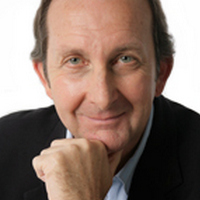

Being normal Australians, you might not know it but the economy, economists and the Reserve Bank team are in what you might call a twilight zone. For economists, what we see or don’t see is summed up in the introduction to that legendary TV show called The Twilight Zone.
In that show, host and creator Rod Sterling welcomed viewers with this: “You unlock this door with the key of imagination. Beyond it is another dimension: a dimension of sound, a dimension of sight, a dimension of mind. You’re moving into a land of both shadow and substance, of things and ideas; you've just crossed over into the Twilight Zone”.
Yep, it’s a creepy time when we’re not sure what’s going on in the economy. Is the data keeping us in the dark or in the shadows? Or are the readings showing us substance on the economy? Is the economy growing OK in order to avoid a recession or is it contracting faster than the expert economy watchers are thinking?
These questions raise even more questions about whether interest rates need to rise or be cut ASAP either later this year or next. The decisions made today could have a big impact on inflation, interest rates, jobs created or lost and, ultimately, whether Anthony Albanese avoids becoming a ‘oncer’ PM.
A lot is at stake and right now. Treasury thinks a rate cut should happen by year’s end. The RBA is uncertain. Its Governor, Michele Bullock, only last week told us that a rate rise wasn’t ruled out at the last meeting of the RBA.
Obviously, the readings on the Consumer Price Index (CPI) is critical for the RBA and rate cuts but if the economy is contracting faster than was thought six months ago, Bullock will need to cut rates before the actual statistics say we’re in the targeted 2-3% band. Right now, inflation is at 3.8% and the June quarter reading was less than economists tipped, who expected 4% to 4.1%.
Yesterday we saw wages rise faster than the last inflation number, but this is what Westpac’s economics team said: “Wage inflation has moderated in the first half of the year with the six-month annualised pace dipping from 4.7% a year in December to 3.4% a year in June.”
That’s a big fall and should help inflation head lower.
What about the job market, which should be a good predictor of what inflation does and what will happen to the growth of the economy?
We got this from news.com.au yesterday: “Australia’s job market is shrinking, with employment platform behemoth SEEK reporting a sharp drop in job advertisements in the past year and warning the next few months will likely remain tough ones for job hunters.”
SEEK says there has been a 20% fall in advertisements, which it said was consistent “with a range of employment indicators such as the rise in unemployment and the slowdown in job vacancies and mobility”.
And this a message that the latest job ads data showed from ANZ. These closely watched job ads dropped 3% month-on-month in July, which was a bigger fall from the revised -2.7% recorded in June and marking a -16.7% decline since January! Annually, ANZ-Indeed job ads are down 20.8%.
What about business and consumer confidence? The latest reading on business confidence from NAB said “…confidence eased and remained low, despite a small increase in forward orders.” Meanwhile consumer confidence did rise a little in July, with no rate rise, but this from Westpac’s Matthew Hassan shows how challenged consumers are: “Despite the improvement, consumer sentiment remains below its March level and still firmly in deeply pessimistic territory. At 83.6, the Index remains well below the ‘neutral’ level of 100, meaning pessimists outnumber optimists by nearly 20ppts. The survey detail suggests positives from fiscal support measures are being negated by increased concerns about inflation and the outlook for interest rates.”
No readings on the economy scream rates need to rise! Other statistics are inconclusive about whether we need rates to be kept on hold or cut ASAP.
At the moment, both the economics teams at the CBA and Westpac, which must have a very good snapshot on a lot of their customers (both business and consumers) think the RBA needs to cut on Cup Day in November. Most economists think it will happen in February next year but given the economic ‘Twilight Zone’ we’re in, maybe a big scary surprise might be needed to get the central bank cutting.
This week, the RBA’s Deputy Governor Andrew Hauser warned us about false prophets making unreliable predictions. But the RBA has a history of being slow to raise rates and slow to cut, so there’s no reason to think of it as a faultless prophet, which is a little scary for businessowners who want to be profitable, or workers who want to keep their jobs!